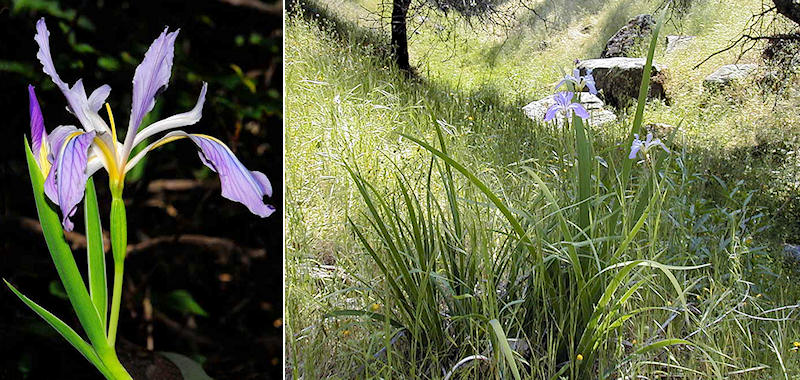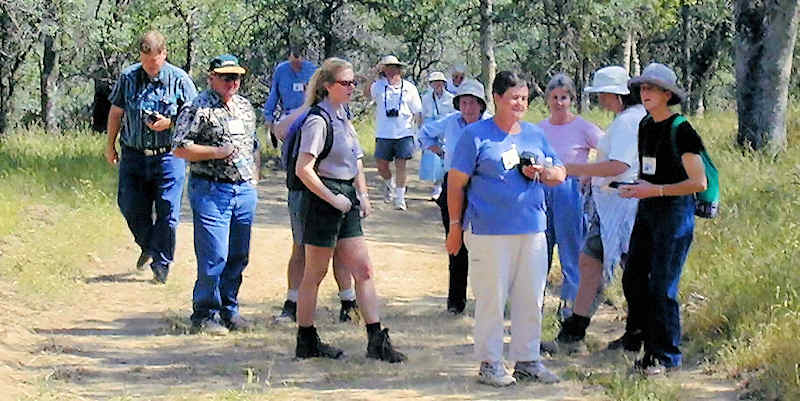Wild PCN iris - short tube group (3 species), spathes spreading:
11. Munz's iris - Iris munzii

Photos: (L) Coffee Camp area © 2009 Irene Lindsey; (R) Sequoia Nat'l Park, 2004 SPCNI Trek, Steve Ayala.

Range: Endemic to a small region in the southern Sierra Nevada foothills in Tulare County, California. 1,800 to 4,000 feet elevation.
Original material: Near Springville, Tulare County, California 1937
Key identifying features:
- Large plants with broad (¾ inch), long (20 inches or more) blue-green leaves.
- Tall (2 to 3 feet), unbranched stalks bear 3-5 large lavender flowers in different stages of development.
- Floral tube short and stout.
- Spathes separate, open, ovary exposed.
Flower color: Pale lavender to reddish-purple.
Habitat: Upper foothill Blue oak woodlands with a thick understory of annual grass, subject to winter rains and dry heat of the adjacent San Joaquin Valley summer. Usually beside minor drainages, the bottoms and sides of small creekbeds; mostly in the shade of blue oak, live oak, buckeye, tall mariposa manzanita, poison oak or similar trees and shrubs.
Name: By Robert C. Foster, for Philip Munz, botanist at the Rancho Santa Ana Botanical Garden and author of several books on California wildflowers.
Comments: Munz's iris are the largest of the Pacific Coast native iris - tall, straight, strong and stately, features much appreciated when horticulturalists look for desirable characters for hybrid crosses. They typically grow as individual plants, and very slowly.
These elegant plants probably had a much wider distribution during cooler, moister times of the Pleistocene, but now seem to be just holding on in the few remaining areas still suitable for their growth. They are listed as "rare, threatened or endangered" by the California Native Plant Society.

A park ranger and a botanist guide Society members on a 2004 Trek to see Munz's iris growing in a restricted access region of
Sequoia National Park. Steve Ayala.